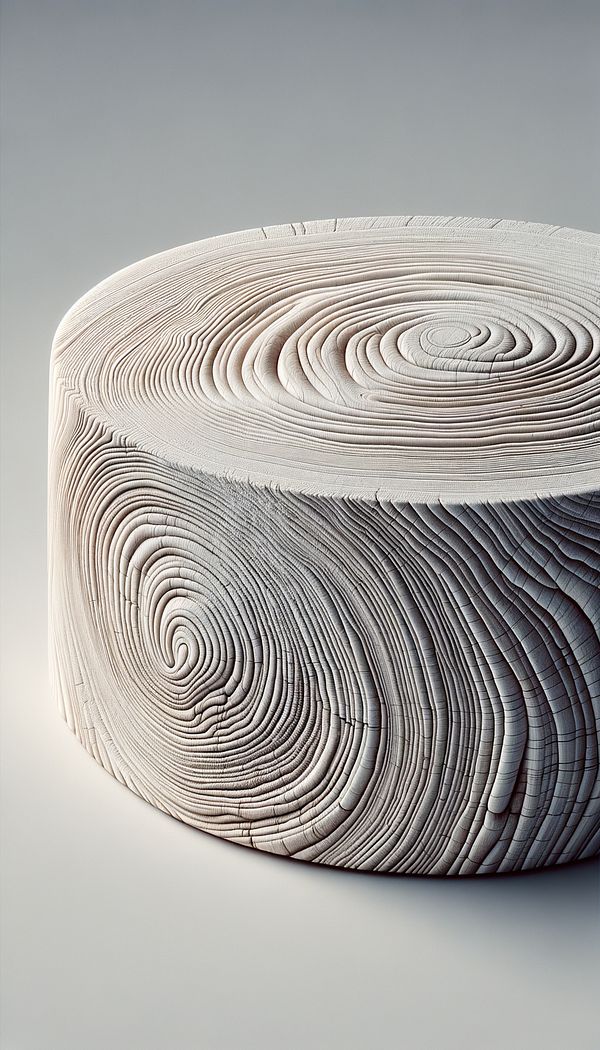What is Liming?
Liming is a decorative technique that lightens wood while also highlighting its grain.
Description
Liming is a distinctive finish applied to wood to achieve a whitewashed look while enhancing the natural grain patterns. This technique, traditionally used on oak due to its pronounced grain, involved filling the wood's grains with a lime paste. Over time, the process evolved with the use of more modern products like liming wax or white oil-based paints diluted with mineral spirits, making it applicable to a wider range of wood types beyond oak. The liming process not only accentuates the beauty of the wood's texture but also lends a soft, rustic charm to the surface, making it popular in decorating principles and elements like country, coastal, or Scandinavian themes.
The process of liming involves several steps, starting with sanding the wood to open up its pores. Once the wood is prepared, a liming product is applied, worked into the grain, and then wiped away from the surface, leaving the pores filled with the white substance. This contrasts strikingly with the natural wood color, making the grain more prominent. Depending on the desired effect, the wood can subsequently be sealed with a clear finish, which preserves both the limed effect and the wood's natural beauty.
Usage
Liming is used on a variety of wood surfaces, from furniture and flooring to decorative items and paneling. It's particularly favored in spaces aiming to evoke a light, airy, or beachy atmosphere, as the technique lightens the wood and gives it a subtly aged look. Liming is versatile and can be tailored to suit modern, traditional, or rustic interior styles, making it a valuable technique for designers and DIY enthusiasts alike.
FAQs
-
Can liming be applied to any type of wood?
Liming is most effective on woods with an open grain, like oak, ash, or pine. The technique can be applied to other types of wood, but the effect may vary depending on the grain structure.
-
Do I need to seal the wood after liming?
Yes, it's advisable to seal the wood after liming to protect both the limed finish and the wood's surface. A clear polyurethane or varnish is typically used for this purpose.
-
Can liming be removed or changed?
Yes, the liming finish can be removed or altered. It involves sanding down the wood to remove the limed finish and then reapplying a new finish as desired.
Practical Application
To achieve the best results in liming, always start with a well-prepared surface by sanding the wood to open up its pores. Apply the liming product evenly and work it into the grain with gentle pressure. Once the desired look is achieved, remove any excess product and seal the wood with a clear finish to enhance durability and preserve the limed effect. Experimenting with different types of wood and liming products can also yield unique and striking effects.
-
Furniture Types599 articles
-
Decorative Techniques322 articles
-
Materials & Textiles360 articles
-
Flooring & Carpets48 articles
-
Wall Treatments & Finishes157 articles
-
Vanity TableA vanity table is a personal grooming station, often featuring a mirror and storage for cosmetics and toiletries.
-
Split-Back SofaA split-back sofa is a versatile piece of furniture featuring a backrest that is divided into two or more sections, each of which can be adjusted independently.
-
PaletteA palette is the range of colors used in a particular design or piece of art.
-
BaggingBagging is a decorative wall finish obtained by applying a thin cement-based layer to walls and then manipulating it with a sponge or cloth.
-
Biophilic DesignBiophilic Design is an approach to architecture and interior design that seeks to connect building occupants more closely to nature.
